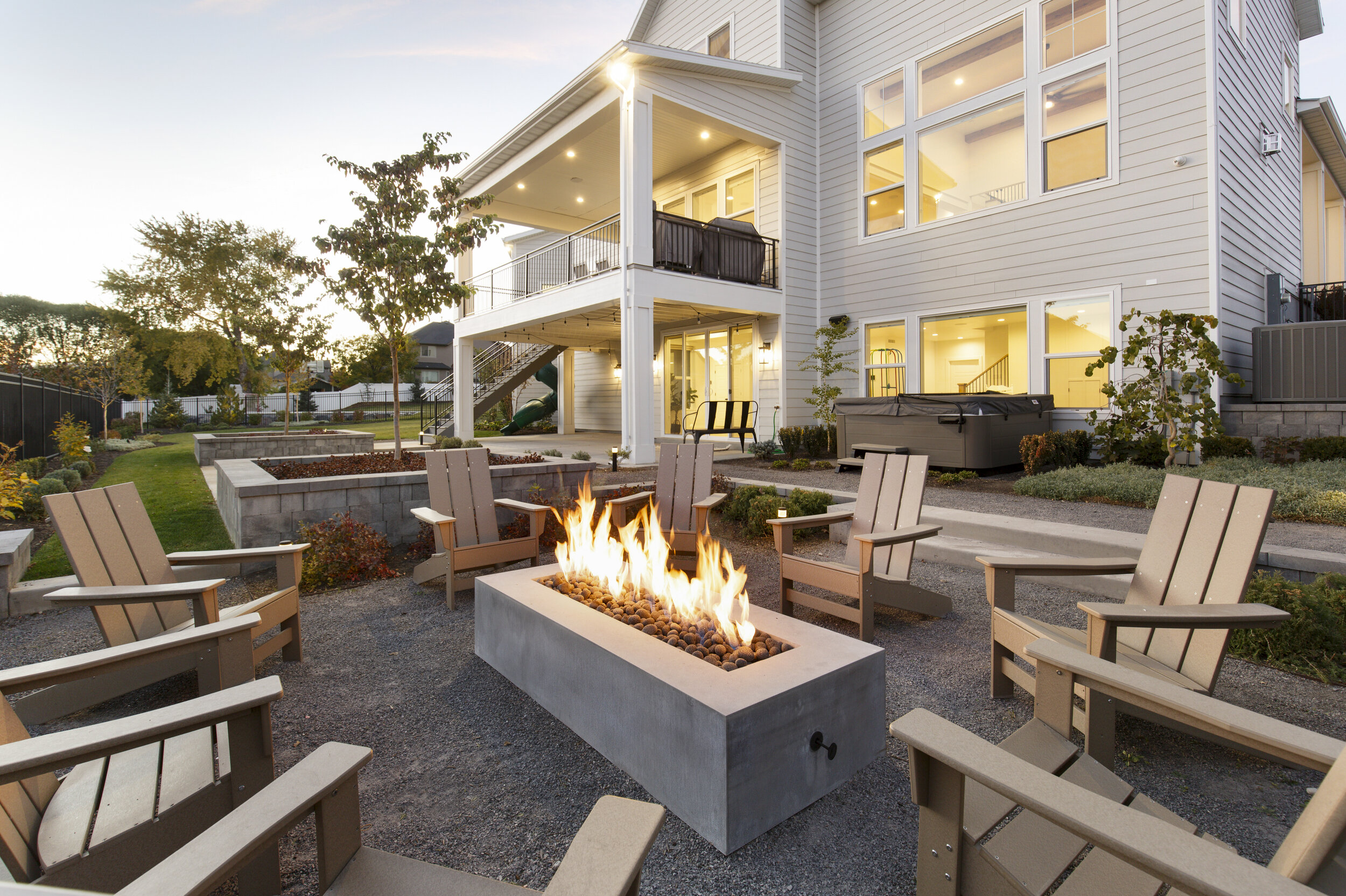The Multifaceted Benefits of Landscaping
Your landscape isn’t just about aesthetics. It’s about creating an environment where you can thrive. From boosting mental health to increasing energy efficiency, the benefits of a well-maintained outdoor space are endless.
Six Benefits of Landscaping for Residential and Commercial Spaces:
1. Enhances Mental and Emotional Well-being
Your backyard can be your personal retreat, a space where you unwind after a long day. Studies show that spending time in nature can:
Reduce Stress: Greenery naturally lowers cortisol levels, helping you feel more relaxed.
Boost Mood: Flowers and plants exude positive energy, creating an uplifting atmosphere.
Improve Mental Health: Whether it’s a stroll through your garden or simply gazing out the window at your landscape, nature is shown to reduce anxiety and depression symptoms.
Planting a garden or designing a cozy outdoor living space isn’t just about looks—it’s about creating a place that helps you recharge and reconnect.
2. Sharpens Focus and Learning
Did you know that greenery can enhance cognitive performance?
Increased Workplace Focus: Research shows that employees working in environments with plants complete tasks more efficiently and with fewer mistakes.
Boosted Learning for Kids: For children, exposure to green spaces improves concentration and information retention. Classrooms or homework areas with plants and outdoor space helps kids focus and stay engaged.
Nature provides a backdrop for productivity, whether at work, at home, or for kids at play and learning.
3. FOSTERS HUMAN CONNECTION AND TOGETHERNESS
Landscaping creates spaces that foster deeper connections, not only among neighbors and communities but also within families. A well-designed outdoor area provides the perfect setting for family gatherings, whether it’s a backyard barbecue, a quiet evening under the stars, or quality time spent with loved ones.
Your landscape can be a gathering place where family and friends connect, creating memories that last a lifetime.
4. Improves Environmental Health
Your landscaping choices directly impact the environment. Here’s how:
Cleaner Air: Trees and plants filter out pollutants, improving the air quality.
Energy Savings: Strategically planted trees can reduce cooling costs in the summer and heating costs in the winter.
Soil Preservation: Landscaped areas prevent erosion, keeping your soil nutrient-rich and stable.
5. Accelerates Healing and Recovery
Did you know that greenery can speed up recovery times?
Therapeutic Effects: Patients recovering from surgery or illness often heal faster when they have access to gardens, the outdoors, or even views of green spaces.
Horticultural Therapy: Studies show the act of gardening itself provides therapeutic benefits.
Whether you're planting a garden or simply enjoying the view in your backyard, your landscape can have a profound effect on physical and emotional health and recovery.
6. Increases Property Value and Curb Appeal
A stunning landscape isn’t just a feast for the eyes—it’s a savvy investment.
Increased Property Value: Professional landscaping can increase your home’s market value by as much as 15%.
The Upgrade Effect: When one home invests in landscaping, the entire neighborhood often follows, creating a cycle of improvement that benefits everyone.
“Home improvements can add significant value to a property, but may not always yield a 100% return on money invested, with the exception of landscaping. Landscaping yields, on average, a 109% re- turn on every dollar spent, much more so than other home improvements. Home buyers respond positively to homes with professionally landscaped and manicured lawns, and consequently perceive a higher property value.”
At IKON Landscape, we specialize in creating spaces that work for you. Whether you’re looking to boost your home’s value or create a peaceful retreat, we’ve got the expertise to bring your vision to life.
Credits:
Hall, C. R., & Dickson, M. W. (2011). Economic, Environmental, and Health/Well-Being Benefits Associated with Green Industry Products and Services: A Review. Journal of Environmental Horticulture, 29(2), 96–103. https://doi.org/10.24266/0738-2898-29.2.96


